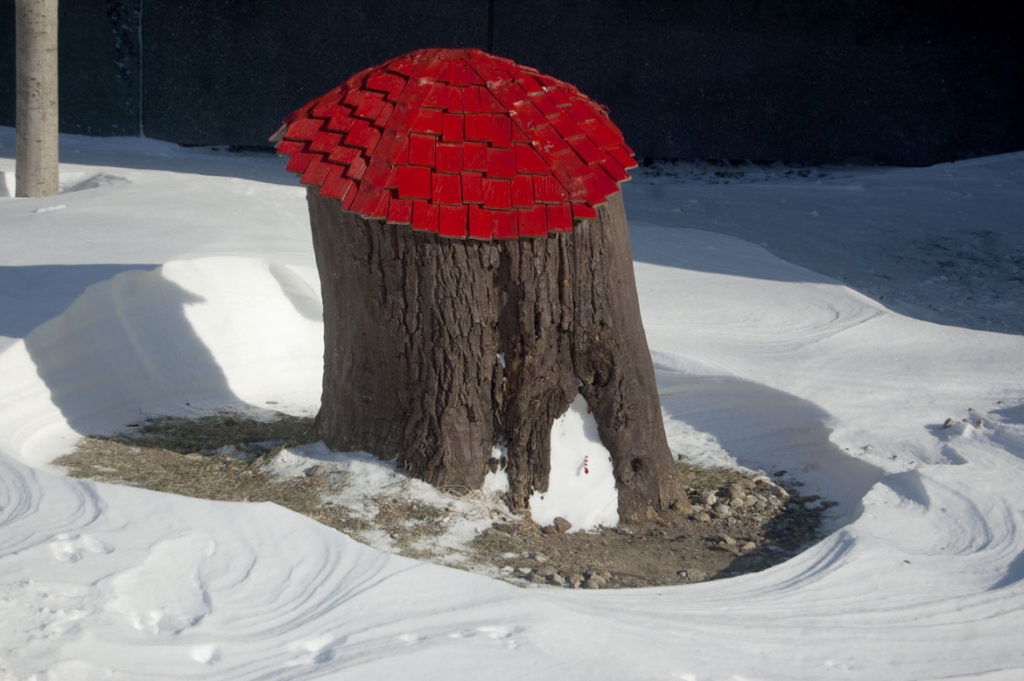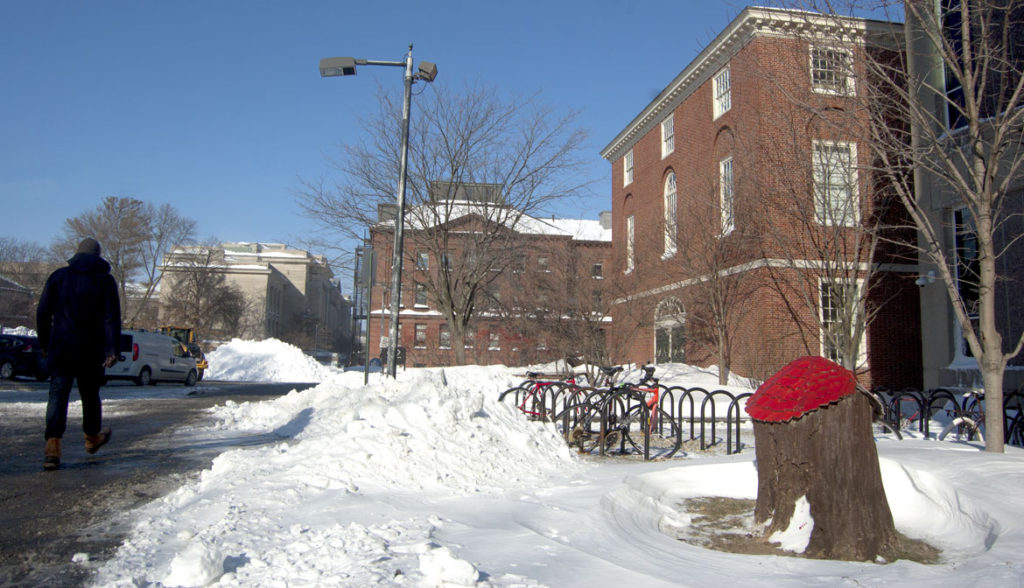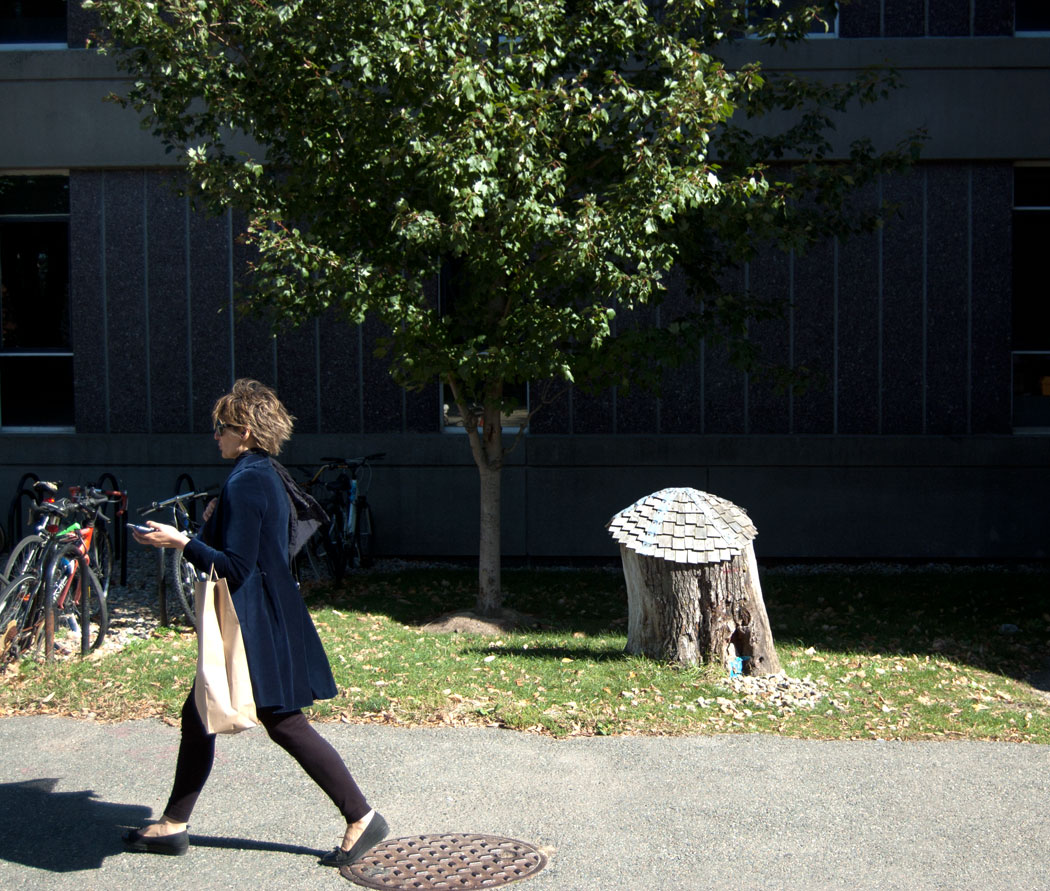Just north of Harvard Yard in Cambridge sits the Harvard Science Building. And just to its left, on its west side facing toward Cambridge Common, is the stump of a tree, topped by a red shingle roof. At the bottom is a hole painted blue inside that serves as a door. Though in much disrepair, this is the longtime home of Winnie-the-Pooh.
There’s no sign to identify this at present, but over the years, the house has had various doors and signs that read “Pooh” and “Mr. Sanders,” as in the classic 1926 book “Winnie-the-Pooh” by A.A. Milne with illustrations by Ernest Shepard. I’d heard that there was a man who cared for it, a fellow somehow connected with the university. And this spring, after a bit of hunting around the internet, I tracked him down.
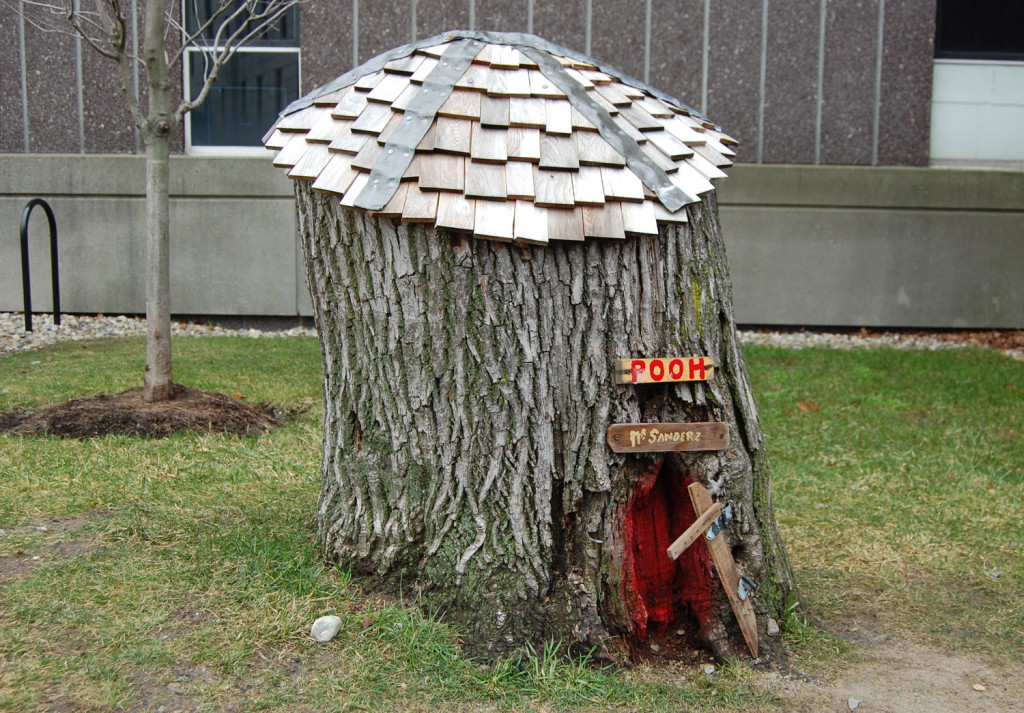
George Eastman occupies a gray-green home about a 10-minute walk from Pooh’s house. Over the years, the 86-year-old studied philosophy at Harvard, then clinical psychology at New York University. He taught music therapy at Berklee College of Music and has maintained a private clinical psychology practice in Cambridge since 1982.
Somewhere around the early to mid 1990s, he began taking care of Pooh’s house. It was a full tree then—perhaps a chestnut, he says. “At that particular time, my second family, my young children, we would be passing by that—they usually went to the Christian Science Church, went with their mother, but occasionally I’d accompany them. There was a sort of vestige of Pooh’s house there, a sign that said ‘Pooh.'”
He replaced the faded sign and added a door. “There was a natural hole there that could lend itself,” Eastman says. “There was a little sign over it, but no door. I wanted to give is some more verisimilitude by adding the door.”
(Another Winnie-the-Pooh house was created on Cambridge’s Hurlbut Street by Cambridge sculptor Mitch Ryerson from a stump left from a silver maple after it was damaged by an April 1, 1997, storm. That Pooh house was removed last year because of rot at the stump’s base and to make room for city pipe replacement and repaving.)
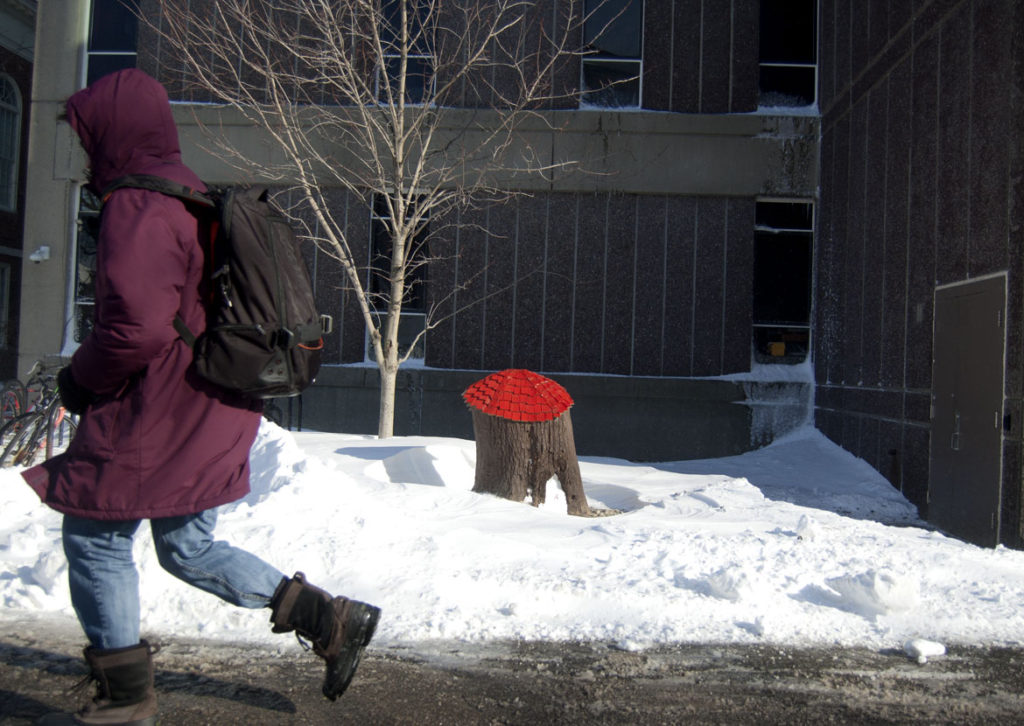
Harvard’s Pooh house is a magical spot. Sometimes there were Pooh figurines. Sometimes the Pooh house would be decorated for Halloween or Christmas. In 1997, Harvard Magazine reported that a home for Piglet had appeared with a nameplate and yellow door across the path from Pooh’s abode. Then a trapdoor marking the location of Rabbit’s house showed up nearby. People would leave pennies that the family would collect and donate to their church.
“Winnie-the-Pooh” is “a psychological study of personality types,” Eastman says, intended “to depict different personality types in a nonjudgmental way, in a humorous, almost loveable way. I consider that to be very positive. You notice that death doesn’t play any part in Winnie-the-Pooh. It’s as though things are going to go on, frozen in time. … Which is a child’s perception of reality.”

“When I would read to my children, it was always an occasion for discussion. We’d talk about, Why is Piglet so afraid? Why is Piglet so preoccupied with his vulnerability? It became clear to me that Milne was preoccupied with different personality types,” Eastman says. There’s the pessimist Eeyore “who believes nothing will ever turn out right,” and the exuberant Tigger, running headlong into messes, not sure what he wants. “Each one of those animal totems represents a human personality.” And there’s Christopher Robin, “a better aspect of the human being, kind and loving and caring.”
But someone(s)—Eastman suspected it was a local high school student—“would destroy whatever door I’d put up and rip off the sign. It was very sad.” Sometimes the door would be broken in a matter of days, sometimes in a month’s time. “Eventually I just got tired of repairing it.”
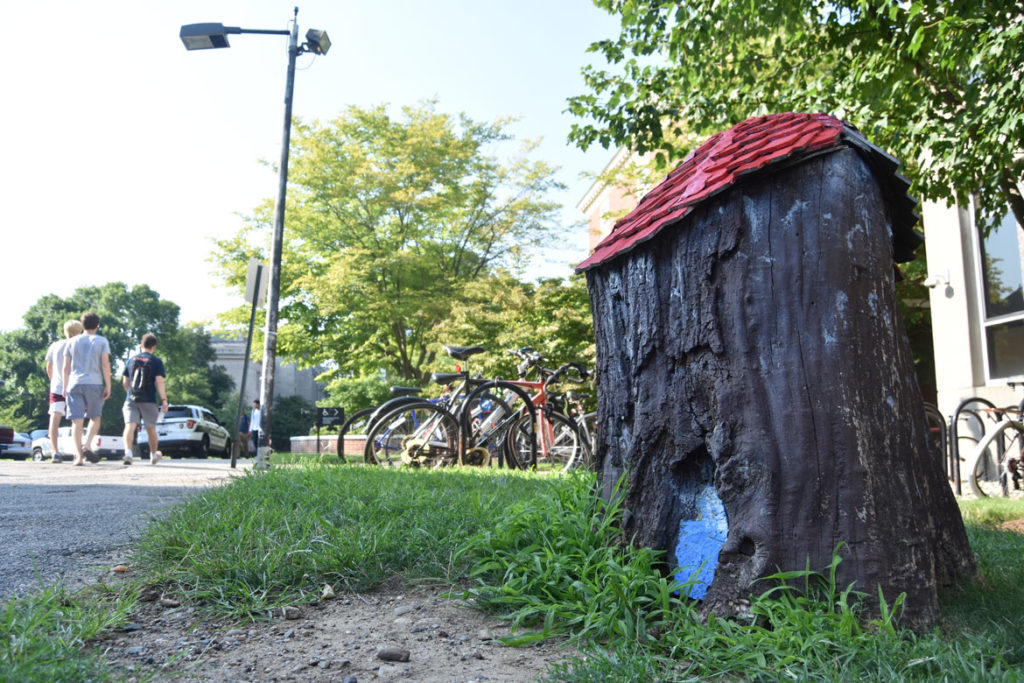
In June 2012, the tree’s poor health prompted Harvard to chop it down, leaving a tall stump. “It was an ancient tree and apparently it was diseased and because it was so close to the Science Building they were afraid of it,” Eastman says.
“It is a loss when it was cut down. I felt very sad about that. It was a surprise to me,” Eastman says. Some time later, “I talked to a workman who came out one day when I was repairing it. And I said, ‘Are you going to do anything about the stump and the weathering?’ And about a month later the roof appeared.”
Eastman says, “There is a deep human aspiration to not have things end. The tree has come to the end. It has been cut. Entropy is destroying the tree. But Christopher Robin and Winnie the Pooh can go on as long as humans are able to read. The tree is a reflection of reality. And my letting it go is a reflection of my practice as a Buddhist. Christopher Robin doesn’t change, but the tree is changing and it will probably eventually be ground down to nothing so what was once the home of Pooh will no longer exist.”
In the years since, Eastman has been easing out of his caretaking duties. “As the children grew up and have left, in a way I was partly maintaining it for them, so that motivation left. I also decided that if this was an important project someone else could take it over. But, however, I have been thinking of making another Pooh sign and putting it somewhere above that opening to re-identify it as Pooh’s house.”
Help Wonderland keep producing our great coverage of local arts, cultures and activisms (and our great festivals) by contributing to Wonderland on Patreon. And sign up for our free, weekly newsletter so that you don’t miss any of our reporting.
